Apple : Foldable phones, 5G and cinematic screens: how smartphones are changing this year |
- Foldable phones, 5G and cinematic screens: how smartphones are changing this year
- How to watch the 2019 Tokyo Marathon: live stream the race from anywhere
- Amazon might be plotting to launch its own grocery stores in the US
- Apple is working on new products to "blow you away", says CEO Tim Cook
- Garmin Fenix 6: what we want to see
- Vodafone just took the title of best value SIM only deal in the UK
- The best keyboards of 2019: top 10 keyboards compared
- Intel Cannon Lake release date, news, and rumors
- Intel Coffee Lake Refresh release date, news and features
| Foldable phones, 5G and cinematic screens: how smartphones are changing this year Posted: 02 Mar 2019 02:15 PM PST I’m sitting on the plane back from Barcelona, having just finished another marathon effort of walking around a conference center looking at new phones and the things they can do. This is my 11th consecutive trip to Mobile World Congress, and this was one of the weirdest ones yet – and it was also oddly refreshing. The two main topics – foldable phones and 5G – were brought up in nearly every press conference or corporate slogan in one form or another. And yet there was an air of difference - a quieter schedule, in some ways, that allowed some key new innovations to take center stage. A quieter beginningMWC started in a more sedate fashion this year. At previous shows we’ve had umpteen launches from major brands packed into a crazy first couple of days, followed by a mad rush to try out all the new things launched. This year, Sunday (the normal press conference day) felt far more measured, and there were only a few announcements on Monday morning. The main reason for this was Samsung. The brand has an on/off relationship with MWC when it comes to device launches, and this year it decided to do its own thing the week before the expo kicked off, which gave the competition more choice in press conference times. Samsung's launch was around the new Galaxy S10 range, but it unveiled eight new products without having to share the spotlight with other manufacturers (those launched included the bendable Samsung Galaxy Fold that got the tech industry under the collar about this new product category).
Image credit: Samsung With no Galaxy S product launch to steer clear of (no sane brand would launch a device at the same time as Samsung, for fear of nobody turning up) there was a lot more time and space for the other brands to spread their press conferences out. One such company was Huawei, which arguably ‘won’ MWC with the flexible, 5G-enabled Mate X phone (and it took our Best in Show title in the annual TechRadar MWC awards). If the Galaxy Fold got us all a-flutter, the Huawei Mate X generated real anticipation for the new smartphone form factor. The difference between the Mate X and Galaxy Fold is that the latter was trapped behind a glass cabinet, where we actually got to touch the Mate X, and experience what genuinely felt like the beginning of a new wave in the smartphone revolution. It even features an as-yet unused camera that the brand is holding back – likely to do with the fact the we'll see something similar on the forthcoming Huawei P30. The presence of those two phones, combined with concept devices from the likes of TCL and Energizer, showed that the foldable wave is very much on the way. A more normal launchOther brands weren’t so avant garde, with Sony ‘only’ launching a raft of new smartphones, including the Sony Xperia 1 and Xperia 10 with a hyper-long display featuring a cinematic 21:9 aspect ratio. I reviewed the LG BL40 Chocolate phone a decade ago with the same kind of long display (this was before LG really got into smartphones) and dismissed it as a luxury, novelty device, so it will be interesting to see if Sony can change that perception. The same brand also showed off a 5G prototype phone, but told us that it wasn't going to start riding the next-gen connectivity wave until the networks actually began switching them on. The idea of a long, 21:9 screen (in the same ratio many top films are shot in) is an interesting one - Sony believes enough people are watching full-length movies on their phone these days to warrant bringing out a phone that almost exclusively caters for them. The handset also featured a cinematography professional mode, allowing 'content creators' to shoot better footage on the go... this is a bold move from Sony, targeting more of a niche of the market, so it will be interesting to see if it pays off.
The Xiaomi Mi Mix 3 (Image credit: TechRadar) Xiaomi’s presence was elevated this year at MWC, with a more prominent display in the main hall of the show. It presented a global version of the Xiaomi Mi 9 phone it launched last week in China, as well as a 5G variant of last year’s Mi Mix 3 – hardly earth-shattering stuff though, and there was no sign of the foldable concept phone it showed off last month. That said, the launch was still a momentous shift in strategy Xiaomi, as the global unveiling of the Mi 9 was the first time it had brought a worldwide device to MWC – in the past it’s preferred to concentrate on places like China and India, where it’s traditionally been strongest. If Xiaomi becomes a global player – and with low prices, underpinned by a promise to never make more than 5% profit on the hardware it sells, it could well become just that – then we could see a real competitor to the incumbents emerge. Waving, not drowningIn terms of the usual suspects from years gone by, LG launched with one of the biggest fanfares, although while the LG G8 and LG V50 5G were on show they lacked a really useful headline feature. The G8 certainly had something to talk about – the ability to use the veins in your hand to unlock your phone, called Hand ID, and a Microsoft Kinect-style camera that could track your palm in real time (Air Motion), allowing you to control the phone using gestures. The thing is, these aren’t really features that consumers are looking for – they seem more like novelties that might get forgotten about pretty quickly after purchase. The G8 has all the elements of being a really rather decent phone, as LG has always brought decent cameras, screen and battery life to the mix with its flagship devices; if the main selling point is being able to waggle a hand to unlock your device, then it could be a hard sell… but we’ll reserve judgement until our final review.
Hand ID was hit and miss in our tests. (Image credit: TechRadar) The V50 5G is an interesting phone – not because of the handset itself, but because you'll be able to buy a DualScreen attachment that doubles the displays on the handset. This is designed to allow users to make the most use of the fancy 5G connections that are on their way, and is also LG's rebuttal to the expensive foldable phones. It doesn't quite offer the same seamless experience.
Two screens... better than one? Image credit: TechRadar That said, the combination of the V50 and the DualScreen is going to cost a lot less than a foldable phone, and does offer the chance to do things like watch a YouTube video and comment at the same time – something Huawei highlighted as it extolled to us the virtues of having a foldable phone with a massive screen. A more mature NokiaNokia phones were back at MWC for the third year after the brand was reincarnated by HMD Global, but this was the first year that we didn’t see a rebooted ‘classic’ phone, after the iconic Nokia 3310 and 8110 both reappeared in the last 24 months. Instead, we got a more 'regular' launch, with a few new smartphones, the most interesting of which was the Nokia 9 Pureview, a phone with five cameras. The 'penta-sensor' design doesn't even use the same multi-format cameras that the other brands are offering, where they’re shoving in a wide-angle, zoom and standard lens on the back of their handsets.
Is five cameras too many? (Image credit: TechRadar) Instead, you’ve got RGB and monochrome snappers, and all five images are snapped at the same time, then combined to bring a more impressive picture at the end. Nokia told us that this was a feature its fans had been clamoring for since it returned to the smartphone game, and that the 9 Pureview is following in the footsteps of the Nokia 808 Pureview and Lumia 1020 – we’re looking forward to seeing how that claim holds up in our full review. OnePlus was a cryptic brand at MWC this year – it was technically at the show with a much-shielded, concept phone on the Qualcomm stand, to show off its 5G capabilities – but we didn’t see anything on the much-vaunted OnePlus 7, due to be coming later this year. Our senior phones editor, John McCann, found some interesting clues about the upcoming OnePlus 7 after investigating the concept device though, so we’re a little more in the know a out what’s coming down the line. And a big clap to Nubia for showing off the Nubia Alpha at MWC this year – a wearable and phone combined into a weird curved-screen bracelet. It’s got cameras, a funky interface, and a very blinged-up option… it’s not going to spark a new category of wearables, but it was certainly novel.
Image credit: TechRadar While it's technically a foldable phone, it's not the same bendable display as we've seen from Samsung or Huawei - and it's got its own wearable OS, rather than a recognized platform. Will it be a real success? It's hard to say until we get the chance to try it out properly, as alternative operating systems can be a bit hit or miss... but at least it's fun to see different things emerging, and that really was rather the theme of this year's MWC in Barcelona. MWC (Mobile World Congress) is the world's largest showcase for the mobile industry, stuffed full of the newest phones, tablets, wearables and more. TechRadar reported live from Barcelona all week to bring you the very latest from the show floor. Head to our dedicated MWC 2019 hub to see all the new releases, along with TechRadar's world-class analysis and buying advice about your next phone. This posting includes an audio/video/photo media file: Download Now |
| How to watch the 2019 Tokyo Marathon: live stream the race from anywhere Posted: 02 Mar 2019 10:02 AM PST The Tokyo Marathon is one of the largest marathons in the world and since 2013, the iconic race through the heart of downtown Tokyo, has been included as one of the six World Marathon Majors. If that's tickled your endurance-racing fancy and want to watch the race, then you're in the right place to discover how to get a 2019 Tokyo Marathon live stream regardless of where in the world you are. The Tokyo Marathon is also one of the hardest marathons to enter as it is generally oversubscribed by a ratio in excess of 10-1 with 331,211 applicants trying to earn a spot in 2019. Athletes from Kenya have dominated eight of the 12 editions of the modern Tokyo Marathon with their main rivals, Ethiopia, winning three races. Dickson Chumba from Kenya is the only man to have won the title twice and he also became the first man to run the race in under two hours and six minutes - a record since surpassed two years ago by fellow countryman Wilson Kipsang. However, this year national record holder Suguru Osako will be running in the Tokyo Marathon. The Japanese national, who is based in the US, will certainly be one to watch in this year's race. On the women's side, Ethiopia has had the best of the last dozen years and reigning champion Birhane Dibaba has won it twice of the nation's five wins, but Ruti Aga - who has had three consecutive runner-up finishes - will be desperate to make the title hers. The 2019 race isn't being widely televised around the world and that's why we're here to help you - we’ll show you how to watch a Tokyo Marathon live stream from anywhere in the world.
How to watch the 2019 Tokyo Marathon: Japan live streamIf you live in Japan and would prefer to catch the Tokyo Marathon from the comfort of your couch as opposed to outside in the cold Tokyo streets, the Nippon Television Network Corporation will show the race in its entirety from 9.10am JST. How to live stream the Tokyo Marathon from outside your countryWe'll tell you about your US and UK options below (there's good news and bad news), but you'll likely hit a bump in the road if you find yourself abroad this weekend and trying to watch a Tokyo Marathon live stream. Broadcasters geo-block coverage. But by using a VPN and changing your IP address back to your home country, you'll discover that it's possible to instrument that hurdle - assuming of course you're not breaching the service's Ts&Cs.
How to watch a 2019 Tokyo Marathon live stream in the USIf you’re in the US and want to watch this year’s Tokyo Marathon, then you’re in luck as you have several ways to watch the event. The Olympic Channel will show the race on television at 7.10pm ET / 4.10pm today. If you’d prefer to stream the Tokyo Marathon on your computer, streaming devices or on mobile, NBC Sports Gold will also be streaming the event. However, with both of these options you will need a cable subscription to watch the race as the Olympic Channel is only on cable and NBC Sports Gold requires that you login using your cable providers’ details. If you happen to be a big athletics fan and plan on tuning into the Diamond League as well as the rest of the IAAF Championships, NBC Sports Gold also offers a Track and Field Pass for $74.99 a year. The service lets you stream all of the top marathons and other athletic events without commercial interruptions and if you happen to miss an event, you can always watch it later on-demand.
Tokyo Marathon coverage in the UK live streamUnfortunately for athletics fans trying to watch the Tokyo Marathon in the UK this weekend, the race will not be shown live on television. Sorry folks - you'll have to wait until the London Marathon in April to get your long-distance running kicks.
This posting includes an audio/video/photo media file: Download Now |
| Amazon might be plotting to launch its own grocery stores in the US Posted: 02 Mar 2019 06:30 AM PST How would you feel about picking up your weekly groceries from a physical Amazon store in the future? The tech giant already owns Whole Foods in the US but is now being tipped to open its own line of stores, perhaps as early as this year. The report comes from "people familiar with the matter" speaking to the Wall Street Journal, so don't take it as a given just yet – but the WSJ does have a solid record when it comes to these sort of scoops. Apparently the new stores will differ from Whole Foods by stocking a different mix of products at lower price points, including groceries and health and beauty products. A pick up service will be available too.
According to the WSJ, the first store could open in LA before the end of this year, with more locations following – San Francisco, Seattle, Chicago, Washington DC and Philadelphia are the other US cities that have been mooted. Don't stop shoppingThe WSJ report also reveals that the sites would be around half the size of a standard grocery store in the US, and that Amazon might consider acquiring another company to help build up the number of stores. It's not clear whether the initiative will expand to other countries at the moment, or if the proposed stores are going to carry Amazon branding. The company has already experimented with a few Amazon Go automated convenience stores already. Whether or not we'll see the same kind of automated checkout system that the Amazon Go stores use in these new grocery locations is also something that remains to be seen. All we know for sure is that Amazon is keen to sell you as much stuff as it possibly can. As is the norm, Amazon has refused to comment on the report, except to say it doesn't comment on rumors or speculation. Watch this space for some Amazon grocery spaces appearing in the next few months. Via TechCrunch This posting includes an audio/video/photo media file: Download Now |
| Apple is working on new products to "blow you away", says CEO Tim Cook Posted: 02 Mar 2019 02:30 AM PST If you were worrying that Apple is running out of steam in the innovation department, CEO Tim Cook has got news for you: the company is working on new products ready to "blow you away", Cook has told investors at Apple's annual general meeting. As Bloomberg reports, Cook also said Apple is in the process of "planting seeds" and "rolling the dice" on products launching at some point in the future – though unfortunately he didn't give a lot of detail about what those products were. The Apple chief did say that some "fantastic" products related to the Apple Watch and AirPods were in the pipeline, while also promising that the Apple Watch is going to continue to get more health-related features over time (like sleep tracking, maybe).
At the meeting Cook also revealed that Apple is working on lowering the price of the latest MacBook Air model, giving potential laptop buyers a more affordable way in to the MacBook Air range. What happens next?With Cook stopping short of naming specific products that Apple is working on, it's up to us to fill in the blanks. Could he be talking about the long-rumored augmented reality glasses that would pick up where Google Glass left off? Or was Cook in fact referring to a self-driving car fully designed and built by Apple? The company seems to be working on some kind of autonomous technology, even if it's more on the software than the hardware side. A new venture that we're certain is about to be launched is an Apple video streaming service, intended to take on the likes of Netflix and Hulu. It could even be bundled with other subscriptions for news and games. On the more predictable front, Apple is of course working on refreshes for all its product lines, from AirPods to iPads – expect to see a lot of new devices from the company in 2019, even if their capacity to blow us away remains to be seen. This posting includes an audio/video/photo media file: Download Now |
| Garmin Fenix 6: what we want to see Posted: 02 Mar 2019 02:00 AM PST Garmin has continually improved its GPS smart watches over the years to reach the most recent Fenix 5X Plus, which could be the best GPS watch ever made. While this watch lives up to its name by offering impressively accurate GPS data, it's so much more. To understand this we need to think about how the Garmin watches fit into the worlds of sports and tech. The watches started as GPS specialists and so still offer some of the most accurate tracking, making them ideal for runners, cyclists, hikers and now lots more thanks to multi-sport support. Then along came smartwatches and the Garmin GPS watches started adding notifications. Then it was music onboard, maps, contactless payments and both heart rate and oxygen tracking. The Fenix line now represents a fashion statement that can be worn all day, tracking activity, as well as at night, tracking sleep. It'll store music and connect to Bluetooth headphones without your phone and even lets you make contactless payments. Connected a smartphone and you get notifications too, just like a smartwatch. So how can this be improved for the Fenix 6? What we want to seeGarmin doesn't follow a standard release cycle like a lot of other gadget manufacturers. Instead it takes its time to create the next product based on what's actually needed. Essentially it only makes a new device if it's needed. So is the Fenix 6 needed? And if so, how? 1. Better build and design
Image Credit: TechRadar One of the most obvious ways Garmin could take its Fenix watches to the next level would be with design. While the Fenix 5X Plus is a great looking bit of kit, it's pretty massive. In our review it was certainly too big to be used as a sleep tracker, unless you don't mind waking up with a black eye, of course. Even for running this is a weighty bit of kit to fit comfortably while still clinging tightly enough for heart rate tracking. By comparison Garmin has kept a more plastic build for its Forerunner line, which is runner and triathlete focused. The Fenix 5S Plus is smaller but it means sacrificing features. So hopefully Garmin has managed to find a halfway sweet spot for the top-end Fenix 6 which won't sacrifice any features but will still manage to slim down. A new screen that's brighter and offers more colors would be a nice too – but we'd expect a size improvement to take priority here as the current display does the job well enough and saves on battery. 2. More contactless payment compatibilityIn its current state Garmin Pay, which lets you tap to pay using your Fenix, is useful for only some people. Certain cards can be paired with the Garmin Pay system leaving some banks out. The result is that, short of changing your bank, you may not be able to even use this feature right now. For the Fenix 6, Garmin could announce wider integration of more banks and payment systems that allow everyone to enjoy the useful feature. Perhaps the integration of PayPal could be a great and simple way to solve this problem and make this feature useful for all. 3. Network connectivity
Image Credit: TechRadar GPS watches are becoming more like smartwatches with stand alone features like music storage, payment systems and mapping. So why not get rid of the phone totally and add network connectivity? While this will likely be 3G to start with, it may get a 4G and even 5G upgrade in the future. This will impact battery but perhaps Garmin can implement a system where the network is only activated when needed – keeping connected but while remaining efficient. It would certainly be a nice feature for those explorers that go off into nature and still want to leave the phone at home yet feel safe. 4. Better music services onboardWhile the Garmin Fenix 5X Plus does offer music onboard it's still not a simple enough to use system. Expect the Fenix 6 to add greater support for more services and easier access to them both from the app and the watch itself. The watch stores music files, but moving them – if you even own any these days – is a hassle. While Spotify has made its way to the 5X Plus already, it's still not easy enough to use. Expect this to improve and for more services like Google Play Music and even higher quality Tidal to get onboard too. 5. Control your smart home
Image Credit: TechRadar Just as smartwatches let you better control the smart home and wider internet of things gadgets, so too will the Fenix 6... we hope. This should mean location activated features, like turning on the heating and lights when your run or ride is taking you close to home. This could also mean greater controls using voice and a microphone. While that's a push, it would mean that the Fenix 6 can integrate a voice assistant like Alexa, Siri or Google Assistant. Then it could be used to touch-free control devices on an already well-built platform that Garmin easily taps into. This could be a nice way to control the watch too, asking for running data to be read out as you run, with Bluetooth headphones on, for example. 6. Google Maps integrationThe Fenix 5X Plus has already begun to offer usable mapping and navigation systems. The next step is to pull in the already near-perfect Google Maps to add another layer of navigation. This will allow you to use your phone to throw routes to your watch and have guidance based training taken to another level with far greater accuracy and adaptability. This service combined with Garmin's huge amount of sensor data could work well to improve both their offerings in one synergetic super system.
This posting includes an audio/video/photo media file: Download Now |
| Vodafone just took the title of best value SIM only deal in the UK Posted: 02 Mar 2019 01:09 AM PST For the last week or so, Vodafone has been playing second fiddle to Three in terms of the best SIM only deals on the UK market. Both were priced at £20 per month for enormous amounts of data, texts and calls, but Three held on to its status as top SIMO dog thanks to its all-you-can-eat data gambit. But Three's extraordinary offer has now finally ended, leaving Vodafone as the heir apparent to the crown. The SIMO king is dead - long live the SIMO king! So what does Vodafone's biggest ever data SIM only deal look like? Well, it's offering a massive 100GB of data each month for those same £20 per month bills. Of course unlimited would have been nicer, but 100GB is still a sum that you'll struggle to even get close to using away from Wi-Fi in a single month - it amounts to around 100 hours of Netflix or Spotify streaming, so a good three hours of solid entertainment every single day.
This impressive Vodafone SIM only deal in full:Why go for a Vodafone SIM only deal?There's a lot to love when it comes to SIMO deals with Vodafone. Whether it's the allowance of all of your data and calls while roaming in 48 different countries, flexible upgrade plans, a great return policy or its impressive countrywide coverage. Not to mention the fact you will have access to Vodafone's VeryMe rewards scheme giving you discounts and freebies throughout your contract. What if I want a shorter term SIM only deal?Not too keen on committing to a full year of Vodafone? No problem. If you want some flexibility with your SIMO then Smarty, a relatively new player to the game, has a 30-day flexible unlimited data plan for just £25 a month, which also gets you your second month free if you sign up now.
This posting includes an audio/video/photo media file: Download Now |
| The best keyboards of 2019: top 10 keyboards compared Posted: 01 Mar 2019 01:55 PM PST If your keyboard is starting to show its age, collecting dust and looking like something from a horror film, you might want to think about picking up one of the best keyboards. Even if you don't’ have a keyboard that’s on its last leg, the benefits to comfort, speed and reliability you gain with one of the best keyboards easily pays for the cost of admission. And, trust us: once you’ve used one of the best keyboards for yourself, you’ll never want to go back. Regardless of whether you’re writing up a term paper or just chatting with friends, the best keyboards will make your life so much easier. And, we’ve got you covered if you’re looking for a sick gaming keyboard, too. Whether you’re trying to get some work done, talk to friends or even get some gaming in on your lunch break, you should look for any keyboard that can get the job done. Fortunately, you don’t need to worry about breaking open the piggy bank, as many of the best keyboards are affordable. So, here’s our list of the best keyboards for work and play, so you can get to typing.
It has become the norm for keyboard manufacturers to implement their own custom keyboard switches, and Roccat – with the Vulcan 120 Aimo – is no different. While this keyboard is primarily marketed as a gaming keyboard, its Titan Switches are tactile enough to be satisfying, while still bouncing back quickly enough to be comfortable to type on for extended periods. And, we’d be remiss to not mention the looks – the Vulcan 120 Aimo looks like a science fiction keyboard, we love it. Read the full review: Roccat Vulcan 120 Aimo
The Realforce, manufactured by the Topre Corporation in Japan is truly a force of nature. This is thanks to the unique Topre switches, which are smooth to type on and are typically compared to playing on a piano. The RealForce comes in both 45 and 55 gram configurations, but the one that’s right for you will depend on the importance of key weight. Oh, and it’s expensive – but the price is worth it for a keyboard this good.
As long as you don’t mind missing out on some of that signature ‘thock’ sound that’s associated with regular Realforce keyboards, opting for a silenced model like the 104 UBS offers some solid benefits. Hitting the 104 UBS’s keys produces sound on par with a membrane keyboard, so it’s going to be great if you work in a busy office or a shared bedroom. The ‘dampened’ feel of Topre’s silenced switches can feel kind of like typing on sandpaper compared to a non-silenced board, but we found that it’s worth the trade-off if you need a quieter keyboard.
Filco's keyboards tend to be built like tanks, and the Majestouch TKL is no different. This space-saving mechanical keyboard features a compact tenkeyless design that has less than 1cm of space between the edge of the keys and the keyboard. Its durability doesn't simply allow it to stand up well to knocks and scrapes – it has a positive impact on its typing feel too. You can hammer away on it at speed, even bottoming out to your heart's content, and the Majestouch 2 will take every bit of punishment.
We’ve seen all kinds of keyboards over the years here at TechRadar, from stylish tenkeyless keyboards to RGB-laden gaming behemoths, but something has always been missing – a focus on creatives. Thankfully, with the Logitech Craft, this is no longer the case. Not only is this a sturdy, tactile and attractive keyboard but it also features a unique dial on its top left corner, which will help creatives expedite their workflow. This dial’s utility will vary depending on the application, from simply controlling the volume on the desktop, to changing levels in various tools in Photoshop. If you spend a lot of time creating content on your PC, the Logitech Craft is one of the best keyboards you can buy today. Read the full review: Logitech Craft
Somewhat legendary in keyboard circles, the PFU Happy Hacking Professional 2 (or HHKB2 as it's usually referred to) is that rare beast - a 60% Topre keyboard. Aimed at coders but fantastic for document warriors too, it foregoes traditional arrow keys, instead making use of function keys and key combinations to provide such functionality. It only takes a short while to get used to, once you've got there the huge benefit is that the HHKB2 is small and light enough to take anywhere, giving you access to that sweet Topre "thock" sound and feel anywhere, anytime.
You just need to look at Microsoft’s Surface devices to know that they’re kind of killing it when it comes to design, and the Microsoft Modern Keyboard with Fingerprint ID takes things to a whole new level. If you’re running Windows 10, and you’re into the Surface aesthetic, this is easily one of the best keyboards out there. Not only does it feel great, but it also features biometric security, by including a discrete fingerprint scanner right next to the “Alt” key. It is an expensive device, but as with everything Microsoft, you can be sure you’re getting what you’re paying for. Read the full review: Microsoft Modern Keyboard with Fingerprint ID
Leopold's Fc660c is more portable than the Realforce 87u, but less so than the lighter and more compact HHKB2. However, the Fc660c benefits from its extra heft and feels like the more solid board. Despite having the same 45 gram actuation force as the HHKB2, the Leopold's keys feel slightly weightier - somewhere nearer to 50 grams. It results one of the most satisfying "thock" sounds on a Topre board.
Remember those old IBM Model M keyboards? Well, that’s what the Unicomp Classic 104 seeks to emulate. Available in both USB and PS/2 versions, it uses a buckling spring switch that takes more effort to press than just about every other modern switch. You’re rewarded for this hard pressing with a tactile response that feels like the classic mechanical keyboards of old, along with a noise that will drive everyone around you mad.
Some keyboards just ooze class, and the Das Keyboard Prime 13 is one of them. Its features a solid aluminum top panel for added rigidity and a very minimalistic look. With Cherry's MX Red or Brown switches under the keycaps, you're given a choice between linear and non-linear offerings with a range of actuation points. It's a great option for media enthusiasts thanks to side lit media control and the inclusion of white backlighting is another bonus. It's not the most affordable keyboard on our list, but if you're looking for something a little bit more premium, Das is the way to go.
According to a government survey, the average British household owned 7.4 internet-connected devices in 2015. Logitech is targeting smartphone and tablet owners who prefer to see their device's display while sat at a computer with its latest keyboard, the K780. If you liked its predecessor, the K380, there's more to love here. (Literally thanks to its added numberpad.) The K780 can still pair with up to three devices using Bluetooth or wireless, allowing you to chop and change between them, and it features the same comfortable rounded keycaps that remain a pleasure to type on. The star of the show, however, is the keyboard's base, which can hold mobile devices up to 11.3mm thick in an upright position. This places them within arms' reach to make anything from replying to WhatsApp messages or reading a digital magazine easy as pie. How to determine the best keyboard for you
It goes without saying that if you demand the look and feel only mechanical switches can provide, rather than those that are slim and stealthy, we suggest perusing our best gaming keyboards round-up instead. Gamers prioritize the actuation that clicky feeling mechanical keyboards bring, whereas traditional home and office users are more about practicality. That said, the sheer magnitude of sound produced by a lot of mechanical keyboards is offputting to some. For those folks, we have some membrane keyboards to recommend as well.
Bill Thomas and Gabe Carey have also contributed to this article This posting includes an audio/video/photo media file: Download Now |
| Intel Cannon Lake release date, news, and rumors Posted: 01 Mar 2019 01:55 PM PST Remember how Intel was going to release Cannon Lake in 2016? And, then when it got pushed back to 2018? Well, according to Intel’s Q1 financial results we won’t see the long-awaited follow-up to Kaby Lake until 2019 – at least in a consumer-ready state. But, at least Intel is still on top of the processor game. However, before we jump into all the juicy Cannon Lake rumors, we should step back, because Intel’s recent activity has given us a bit of whiplash. So, traditionally, Intel stuck to a predictable ‘Tick Tock’ release schedule, where generation would alternate between introducing a new die process and architecture. This is why we all expected Cannon Lake to succeed Skylake in 2016. But that never happened. Instead, Intel keeps pushing Cannon Lake back, releasing Kaby Lake, Coffee Lake and Coffee Lake Refresh instead. Three more refinements of Skylake. At this point, we’re not sure when Intel is going to release Cannon Lake, even if it claims it’ll release in 2019. If you’re confused, trust us, you’re not alone, which explains why AMD is has claimed significant market share. There’s some good news, though: there has been a listing for a Cannon Lake processor. It’s a 10nm laptop chip that will probably never be released, at least not in the US, but it’s a start. So, what’s going on with Cannon Lake, since the 9th generation has started without it? Intel keeps denying that Cannon Lake has been canceled, even though Sunny Cove will be Intel’s next architecture with Ice Lake appearing in the very release window we previously assumed would belong to Cannon Lake. And, while there has been a Cannon Lake laptop chip, we’re still trying to figure out what exactly Intel is doing. So, be sure to keep this page bookmarked, and we’ll update it with any new Cannon Lake information – that is, if there is any new Cannon Lake information.
Cut to the Chase
Release dateWe were supposed to get Cannon Lake twice already. The presumably 9th-generation Intel CPUs were initially supposed to follow Skylake in 2016, then Kaby Lake in 2018. But according to Intel’s Q1 2018 financial report, it’s “currently shipping low-volume 10nm product and now expects 10nm volume production to shift to 2019.” So, we’re probably not getting Cannon Lake in 2018. There was some recent speculation that pointed to Intel just cancelling Cannon Lake, because it wasn’t financially feasible to shift to 10nm. However, Intel came out and defended itself, saying that it was ‘making good progress on 10nm’ and that ‘yields are improving’. So, we just have to see when this smaller manufacturing process makes it to market. But, then we keep getting more and more evidence that Cannon Lake might never see the light of day. Intel just announced its Sunny Cove 10nm microarchitecture, for both server and client processors, for release in late 2019. So, is Sunny Cove just Cannon Lake rebranded? Is Cannon Lake cancelled? Who knows. Either way we’ll have to wait until at least 2019 to see Cannon Lake, or whatever it’s called now, but when in 2019? Well, we don’t know yet, but we did get our hands on a leaked Intel roadmap that shows Coffee Lake Refresh being Intel’s main platform through Q2 2019. But, given Intel’s recent supply issues, we could see the release pushed back to the latter half of 2019 or even 2020.
PriceIntel probably isn’t going to rock the boat too much here. We expect prices to fall in line with the current lineup of 8th-generation Coffee Lake processors. We’ve taken the liberty of listing some of the prices here.
Unfortunately, we won’t know until Intel actually releases pricing information, but between generations, Intel doesn’t generally shift its pricing all that much.
SpecsThis is where things are going to get interesting. It’s been a very long time since we’ve seen a die process shrink at Intel, but when Broadwell succeeded Haswell (yeah, it’s been that long), we saw 30% gains in efficiency. This will mean that battery life in the best laptops will surge, and we’ll be able to overclock even harder while keeping temps manageable. Tom’s Hardware has reported that a dual-core Cannon Lake CPU was shipped last year according to a Spectre microcode guidance document, but it’s highly unlikely that consumer units will be the same. Otherwise, AMD would eat them alive for that. We’ll likely see higher core counts, as Intel is going to want to go up against AMD in a major way. This dual-core chip was likely that Intel Core i3 8121U processor that was just listed by Intel. According to the product listing the processor features two-cores and four-threads delivering 2.2GHz of base performance and boost clock of 3.2GHz. It also has a TDP of just 15W and a 4MB cache. And, Anandtech seems to have got its hands on a laptop running that Core i3-8121U for testing – and, well, it’s not the next-generation revolution you were expecting. It beat the Kaby Lake Intel Core i3-8130U in some benchmarks, but many of the tests put the Cannon Lake mobile chip behind in power, while consuming more power. We’ve also seen a leaked document that suggests a new X399 chipset in the works that would support existing Coffee Lake CPUs and possibly Cannon Lake processors as well, suggesting enthusiasts won’t need to upgrade their motherboard to get on the Cannon Lake train. If the newly-announced Intel i7-8086K is any kind of clue as to what we can expect from future Intel products with its 5GHz boost clock, we won’t only see high core counts as a result of the move to a 10nm process, but crazy high clock speeds as well. Ultimately, we won’t know what performance advantages Cannon Lake CPUs will offer until Intel shares some more information about it, but because it’s been pushed back until 2019. It’s likely we won’t hear anything from the tech behemoth until Computex 2019. But, don’t worry if anything changes, we’ll update this page. So, keep your eyes glued to this page. This posting includes an audio/video/photo media file: Download Now |
| Intel Coffee Lake Refresh release date, news and features Posted: 01 Mar 2019 01:54 PM PST When Intel launched the 8th-generation Coffee Lake processors, no one knew what was going on. But, we weren’t fooled again when it launched the 9th Generation Intel Coffee Lake Refresh lineup. This time around, Intel brought higher core counts and faster clock speeds across the board. Coffee Lake Refresh bridges the gap between Coffee Lake and AMD Ryzen 2nd Generation – or it will until AMD launches its 3rd Generation Ryzen chips. We’ll see how successful Coffee Lake Refresh is once we’ve finished testing all the different chips, but just judging by the Intel Core i9-9900K, Intel has succeeded. With Intel’s first mainstream, 8-core, 16-thread processors for consumers, Coffee Lake Refresh changes everything. Now, these are just the highlights, but there is so much more Coffee Lake Refresh information out there, so strap in for the long ride and we’ll tell you everything there is to know about the latest from Intel. Cut to the chase
Intel Coffee Lake Refresh release dateAt its 2018 Desktop Launch Event, Intel finally revealed when we can get our hands on its 9th Generation desktop lineup. The good news is that all the speculation was pretty much spot on – preorders are live now, and the chips will start shipping out on October 19. However, we’ve only seen the announcement of there of the Coffee Lake Refresh processors – the Core i9-9900K, Core i7-9700K and Core i5-9600K. We’re sure that the lineup won’t end here, so keep this page bookmarked, as we’ll update it when new processors get announced. And, at CES 2019, Intel announced a few new processors along with variants of existing CPUs without integrated graphics to flesh out its Coffee Lake Refresh lineup, and to better compete with lower-end Ryzen chips – without lowering the prices. Intel Coffee Lake Refresh priceNow that Intel has announced its new desktop platform, we now know what the pricing is going to look like. For the most part, it falls in line with what Intel charged for Coffee Lake desktop chips, though the Intel Core i9 is much more expensive than the competition, namely the AMD Ryzen 7 2700X. But, at least Intel is giving users the choice to get processors without integrated graphics for the same price. The prices are as follows:
We’re sure that Intel is going to pad this lineup with other mid-range and entry-level processors over the next year or so to pad out these massive price gaps. Until then, though, we can still expect fantastic multi-core performance at a reasonable price.
Intel Coffee Lake Refresh specsNow that Intel has shown us what Coffee Lake Refresh is capable of, we have a clear picture of what these new processors look like. And, while only three Coffee Lake Refresh processors have been revealed, we’re sure there’s more to come in the near future.
This initial lineup is noteworthy, as it marks the first Intel Core i7 chip in a while without hyperthreading – instead it just features eight single-threaded cores. Still, that should be plenty, especially considering the impressive 4.9GHz boost clock. Luckily, there is still a 9th-generation consumer chip that retains hyperthreading in the Intel Core i9-9900K. Intel might be pushing these core counts even higher, too. A recent forum post suggests that Intel might be pushing out deca-core ‘Comet Lake’ processors, based on the same 14nm process as Coffee Lake Refresh. This is a pretty thin rumor, but, it could see an even bigger performance boost over the Ryzen 7 2700X. These new processors also feature much improved thermal performance, thanks to a soldered thermal interface material (STIM). This should help these processors overclock more efficiently without having to resort to exotic cooling solutions to stretch the performance out. This is big, because Intel has stuck with non-soldered thermal paste to transfer heat between the processor dies and the IHS – much to the chagrin of enthusiasts and overclockers. This new soldered material should be a much more efficient heat transfer medium, which Intel says will lead to easier overclocking. However, some of the new F-series Coffee Lake Refresh chips will be sticking with the non-soldered solution. Intel says this is because standard F-series chips won’t be overclocked, and thus won’t need the more robust cooling solution. Luckily, the processors model names with a ‘KF’ suffix will include the same STIM as earlier 9th-generation processors. One more thing – an Intel Core i9-9900T leak showed up on Yahoo Auctions. It seems to be a 35W version of the Intel Core i9-9900K with the same amount of cores and threads, but with a severely cut down clock speed. This part hasn’t been announced by Intel, so we would take it with a grain of salt – but this wouldn’t be the first time Intel launched low-power T-series chips for prebuilt computers.
Intel Coffee Lake Refresh featuresOf course, it wouldn’t be a new Intel processor lineup with a new motherboard and chipset platform. Interestingly enough, Intel’s forthcoming Z390 chipset is on the way, and can finally be preordered, after months and months of speculation. This new platform supports t onboard 802.11ac Wi-Fi, and USB 3.1 Gen 2 – both of which are features not found natively supported on the current Z370 chipset. This new chipset now supports up to 40 lanes of PCIe Express 3.0, but is still limited to dual-channel, 2,666MHz memory.
Intel Coffee Lake Refresh performanceWe have finally fully reviewed and tested Intel Core i9-9900K and it is, without a doubt, the fastest consumer processor on the market right now. Intel’s high end chip absolutely dominated everything else in both single core and multi core performance, scoring a ridiculous 33,173 multi-core score in GeekBench 4 – compared to the Ryzen 7 2700X’s 26,011 – it even destroys AMD’s HEDT Threadripper chips in many everyday situations. However, be careful of the inflated price you’re paying for this higher performance. WE haven’t tested either the Intel Core i7-9700K or the i5-9600K yet, but those reviews are on the way. Until then, though, we have some preliminary results from Intel, but take these with a grain of salt. Back at Intel’s reveal event for Coffee Lake Refresh, we were able to test the new processors in gaming specific workloads, where the Intel Core i7-9700K was able to hit 30,339 points in a World of Tanks benchmark – compared to the Intel Core i9-9900K’s 33,108 in the same test at the same event. Meanwhile, the Intel Core i7-9700K was able to hit 30,339 points in that same World of Tanks benchmark – which is impressive given that chip doesn’t feature multithreading. That’s all we got right now. There’s surely a ton of information to come – so, per our usual advice, we encourage you to keep this page bookmarked, as we’ll keep it updated with in-depth coverage of the latest Intel Coffee Lake Refresh news, information and reviews. This posting includes an audio/video/photo media file: Download Now |
| You are subscribed to email updates from TechRadar - All the latest technology news. To stop receiving these emails, you may unsubscribe now. | Email delivery powered by Google |
| Google, 1600 Amphitheatre Parkway, Mountain View, CA 94043, United States | |



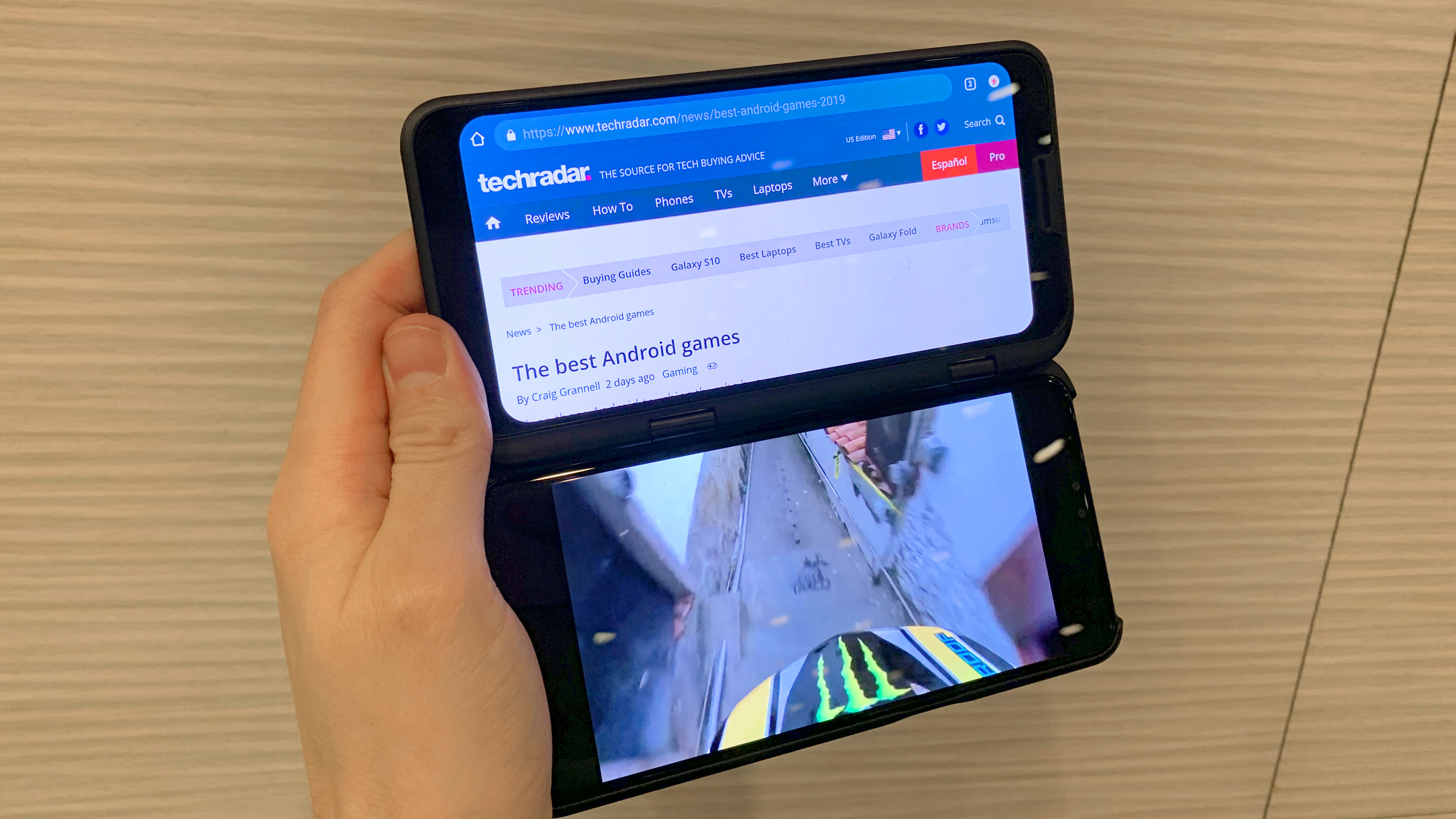

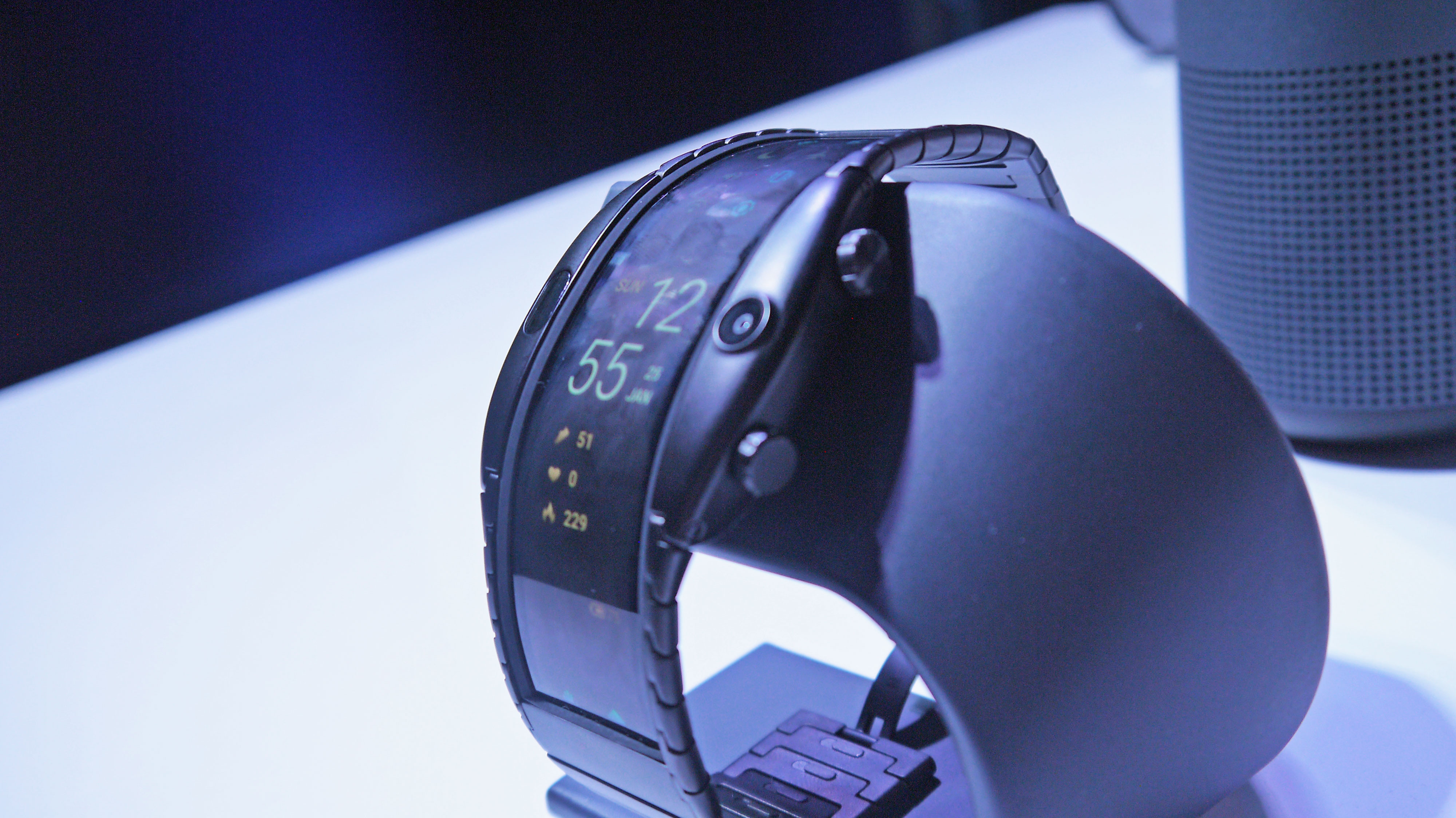






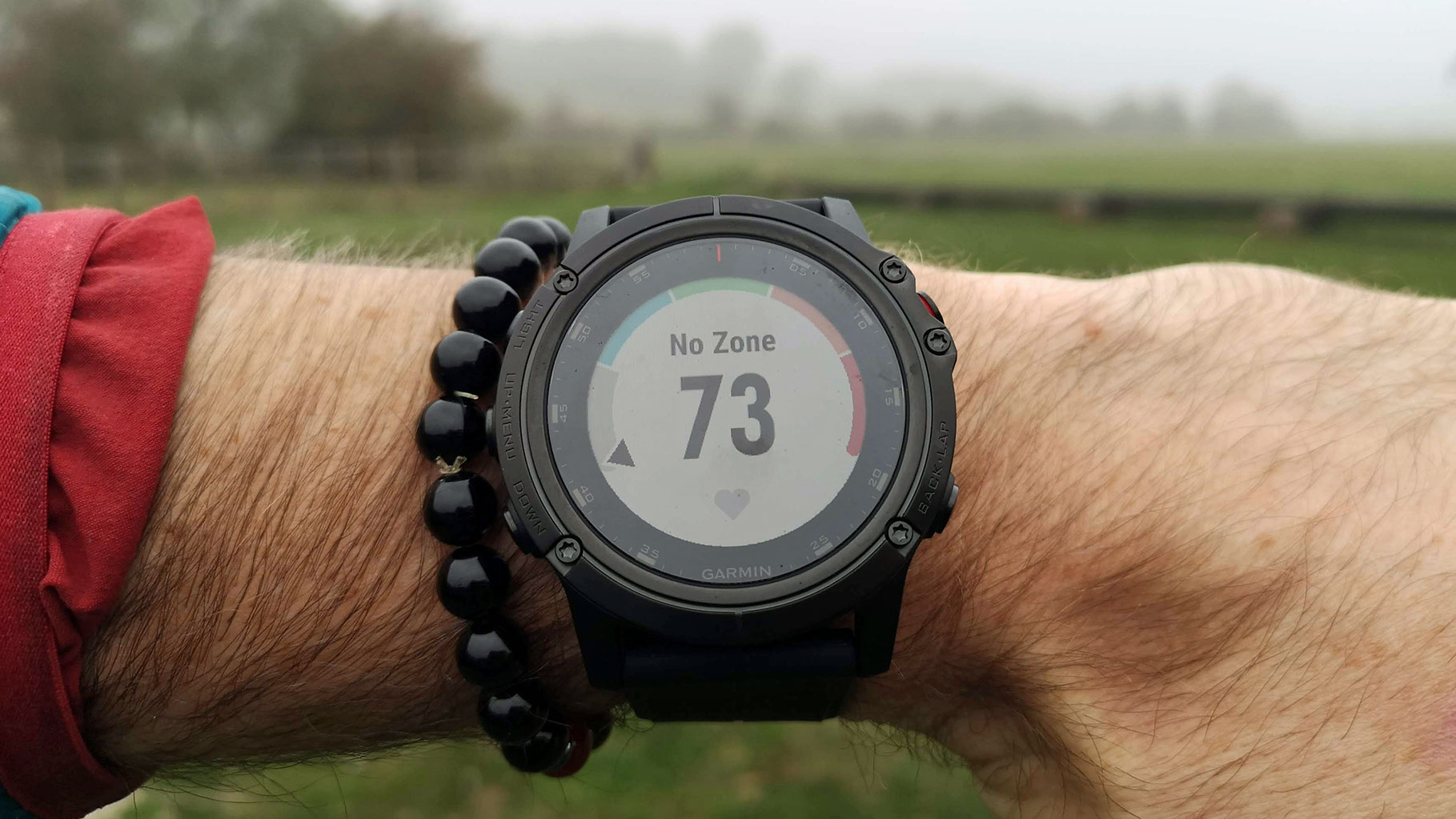
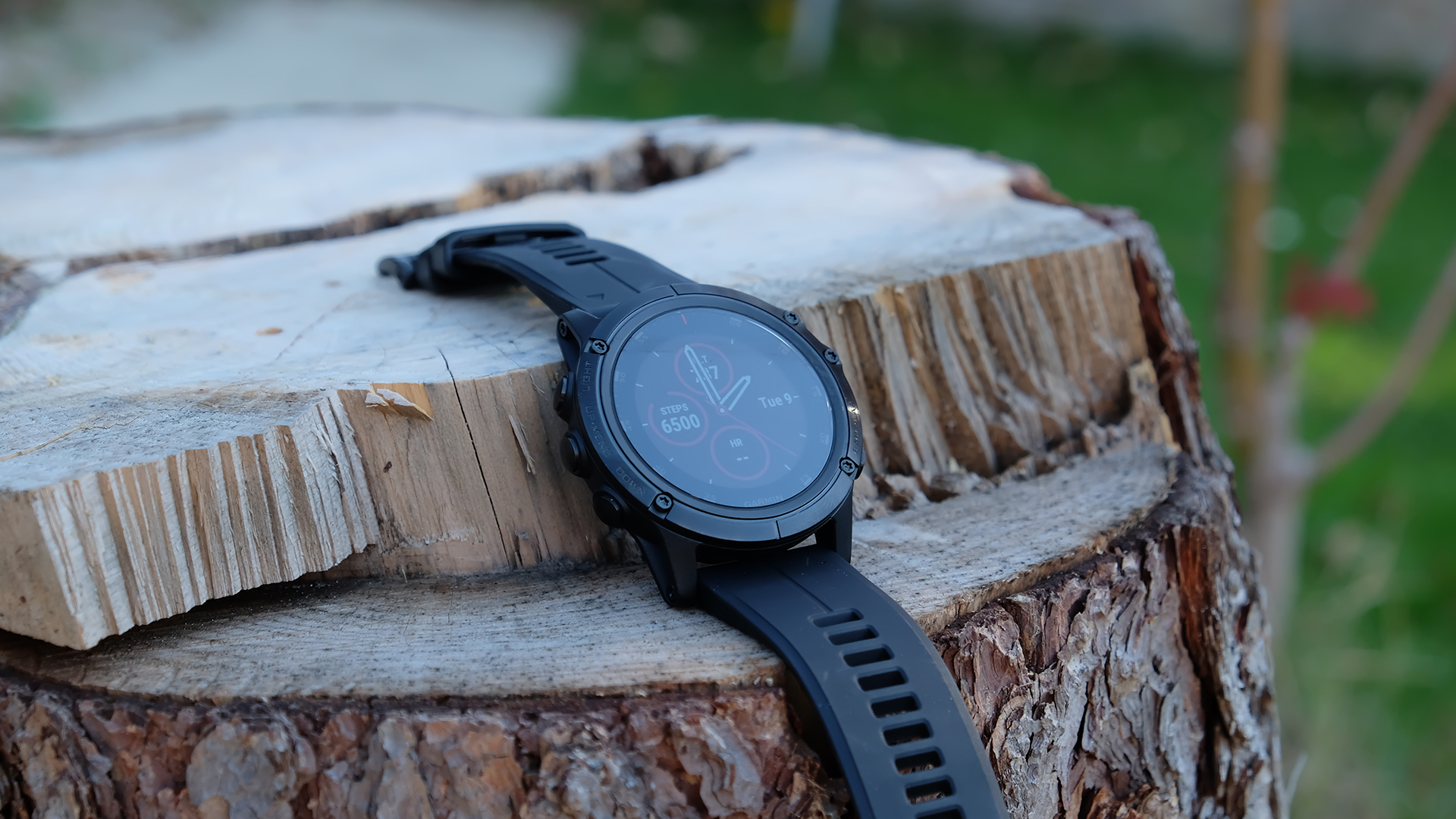
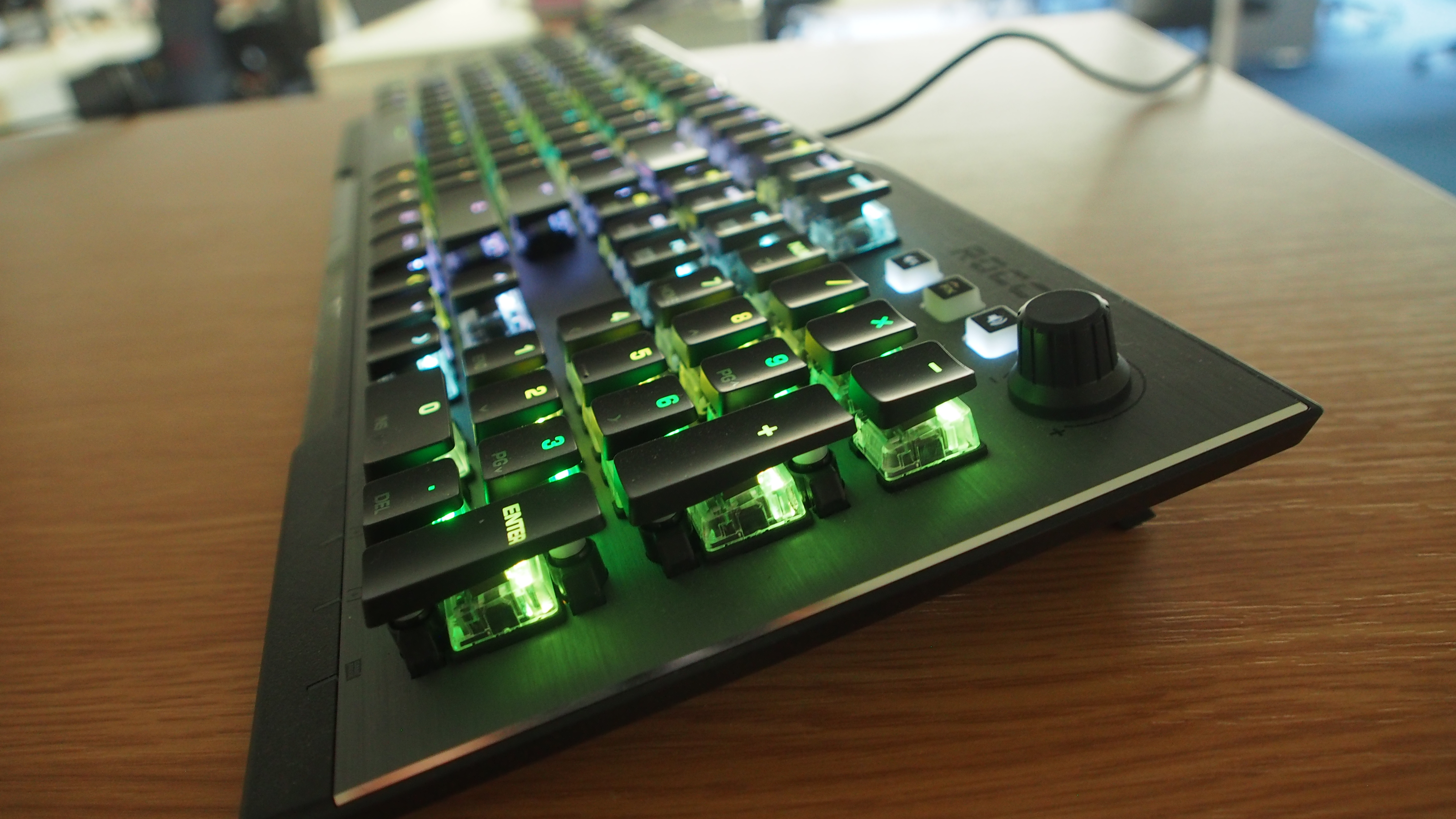

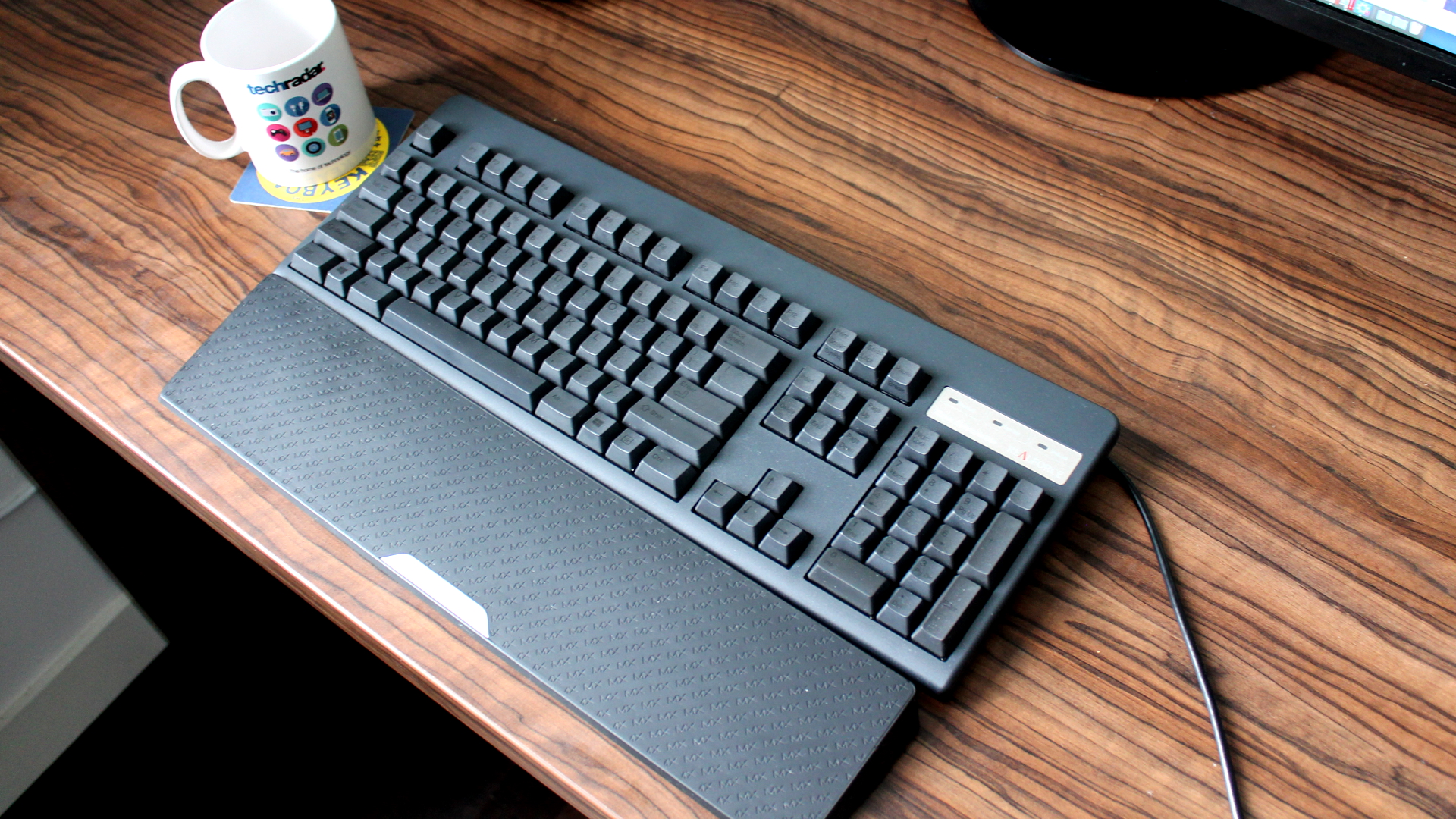



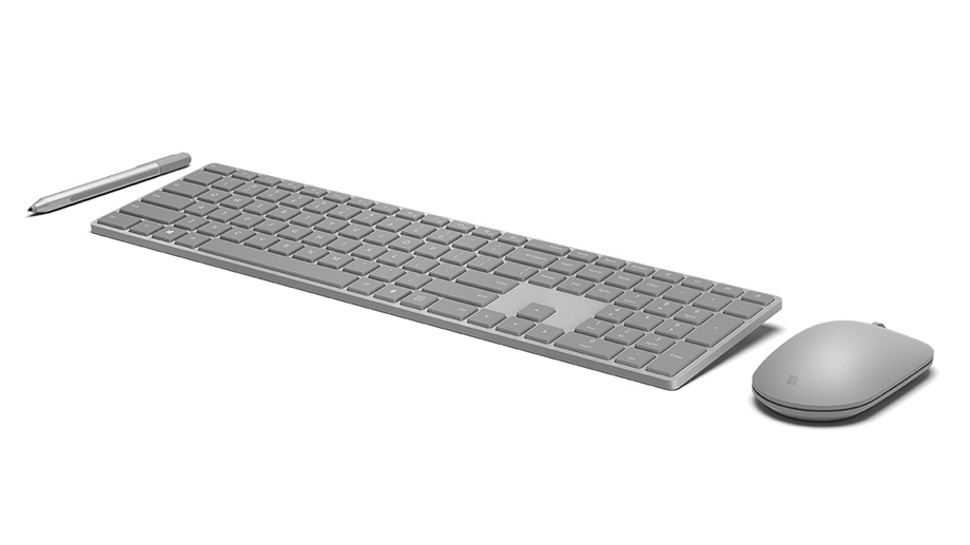
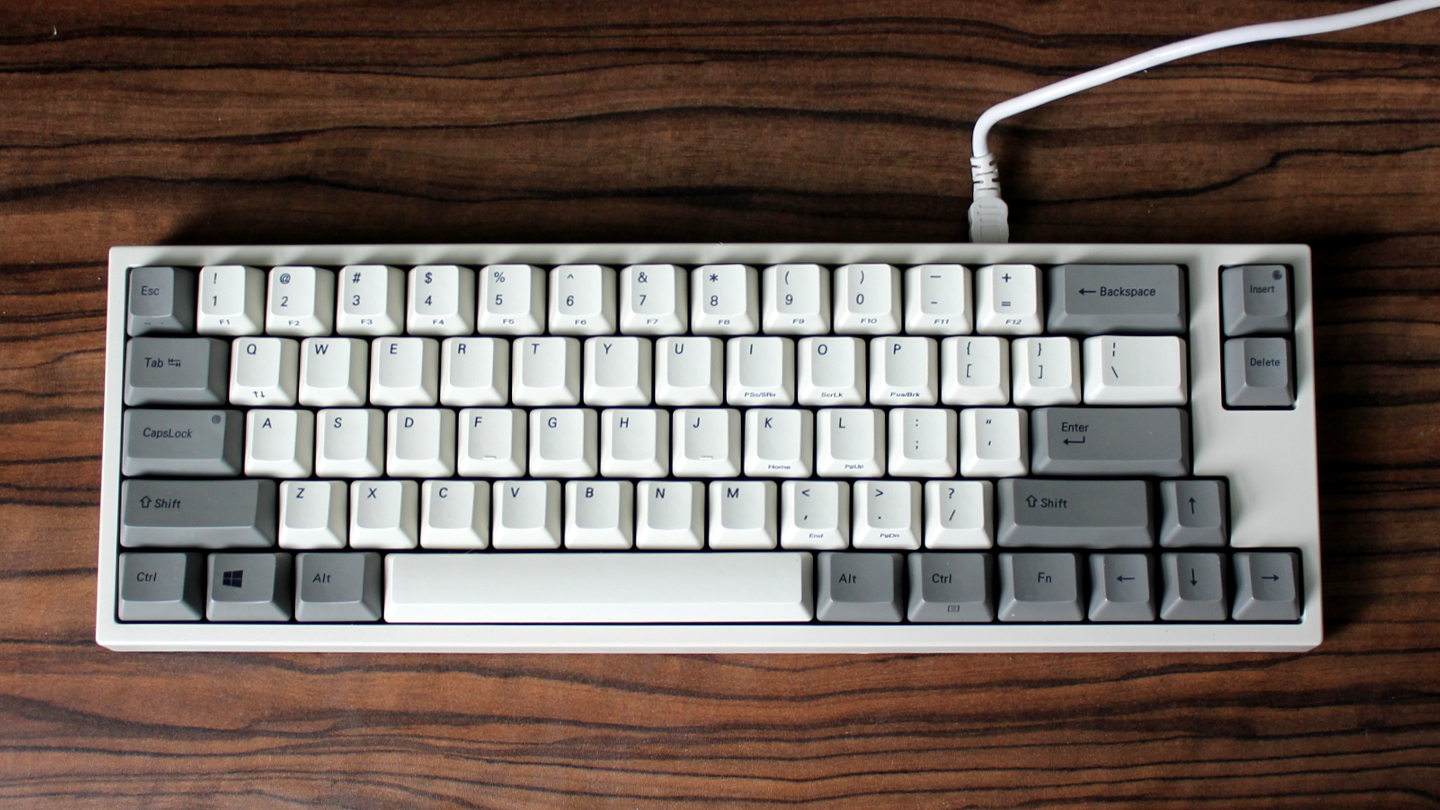

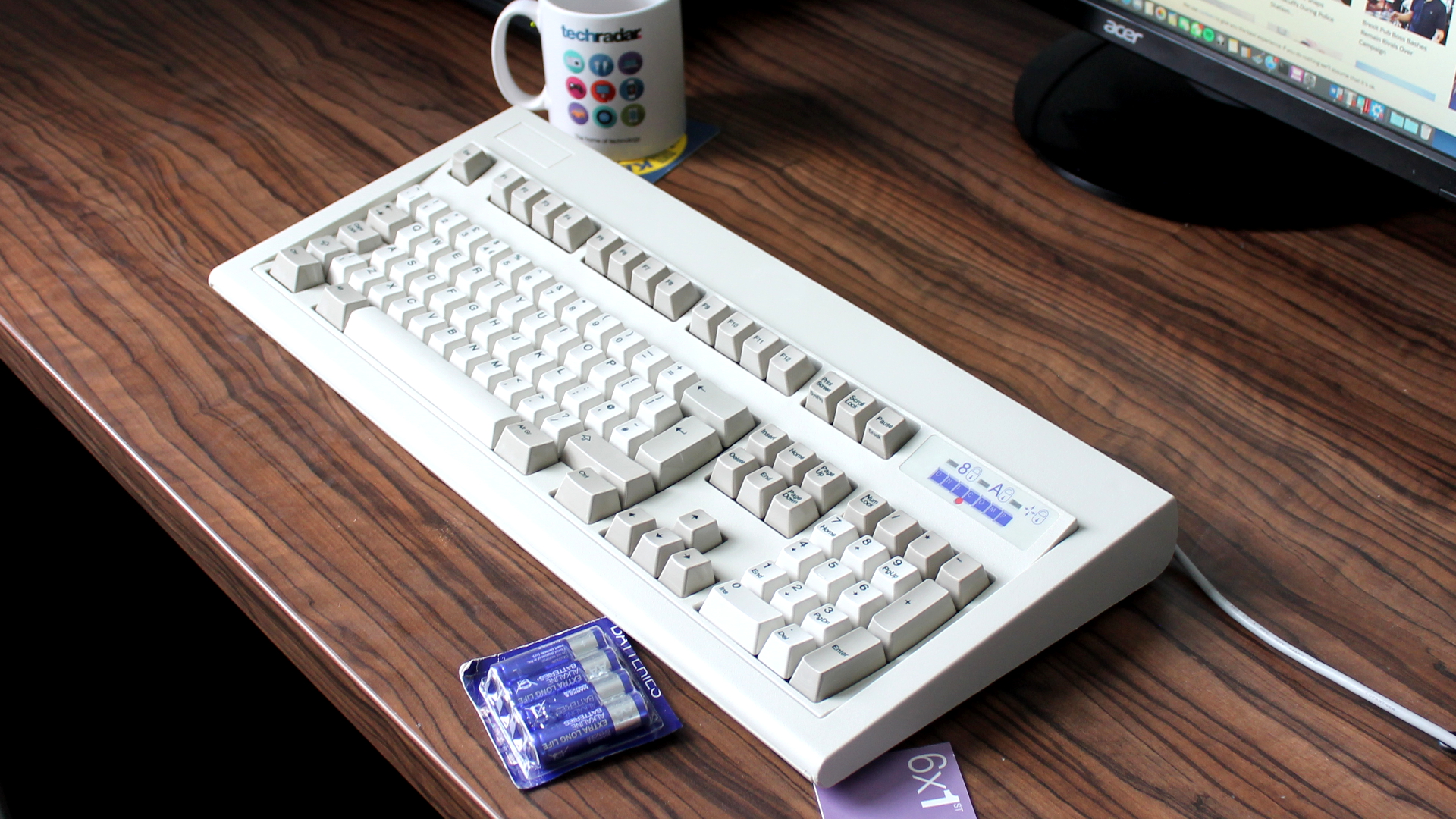
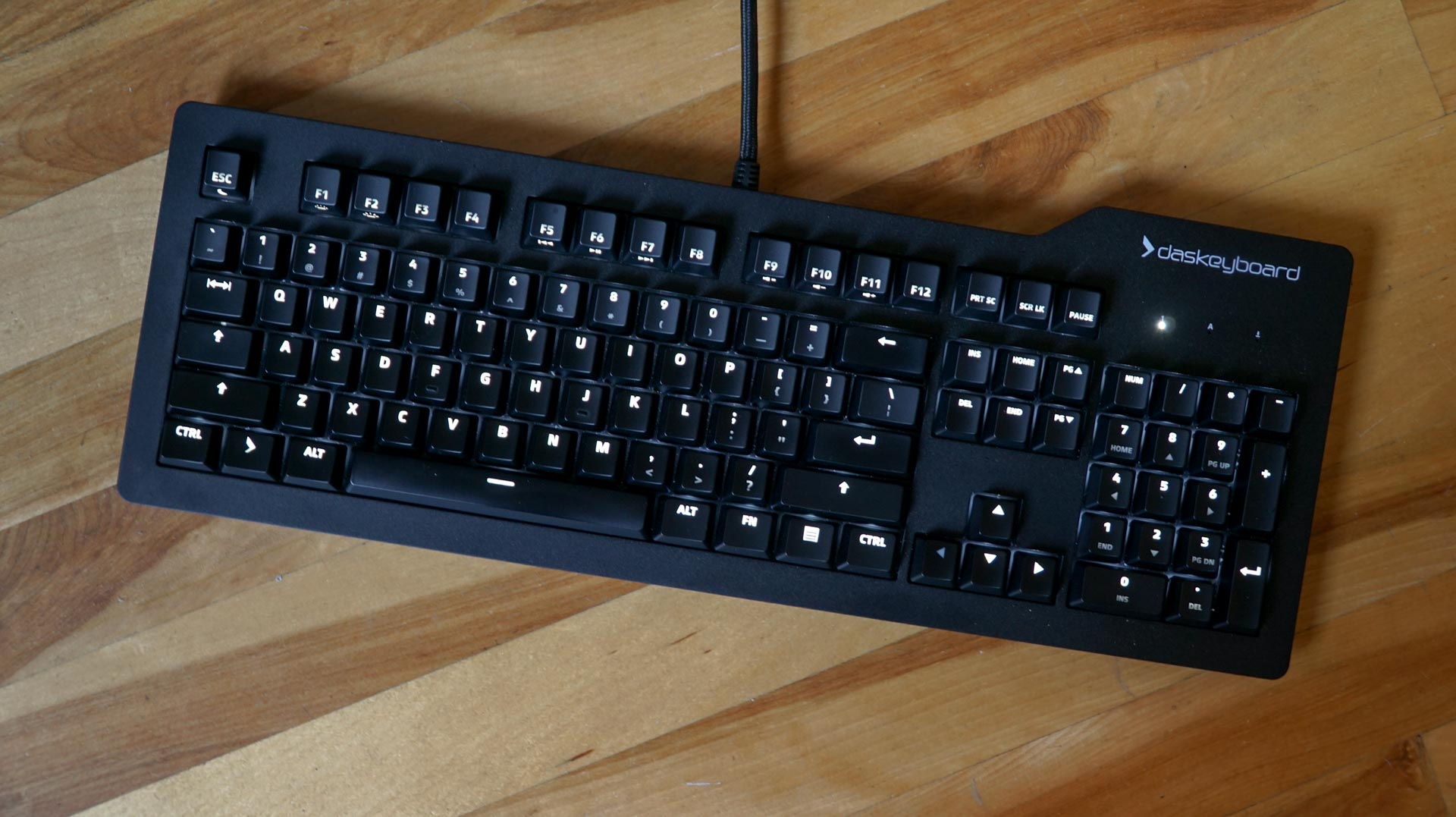
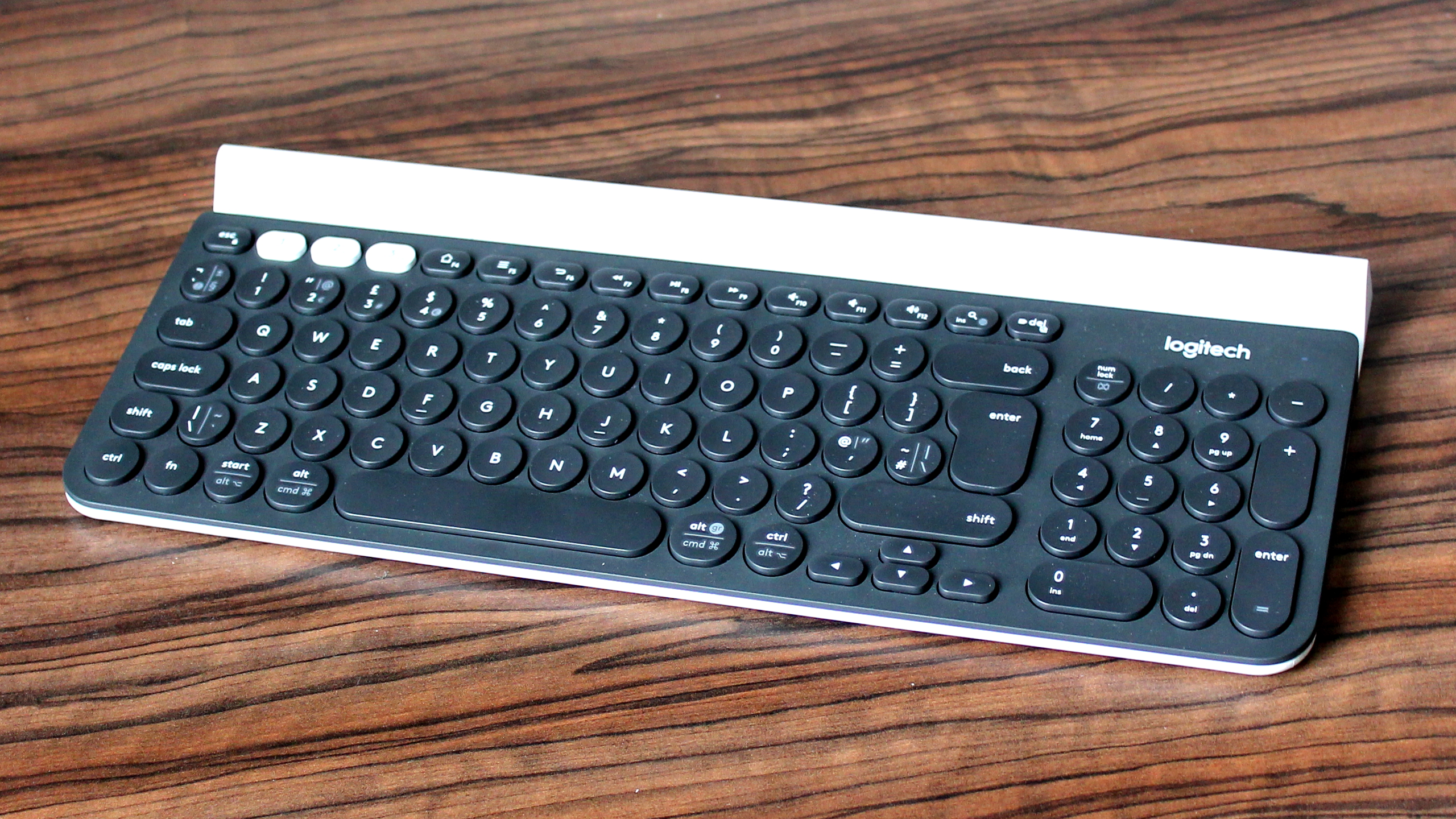

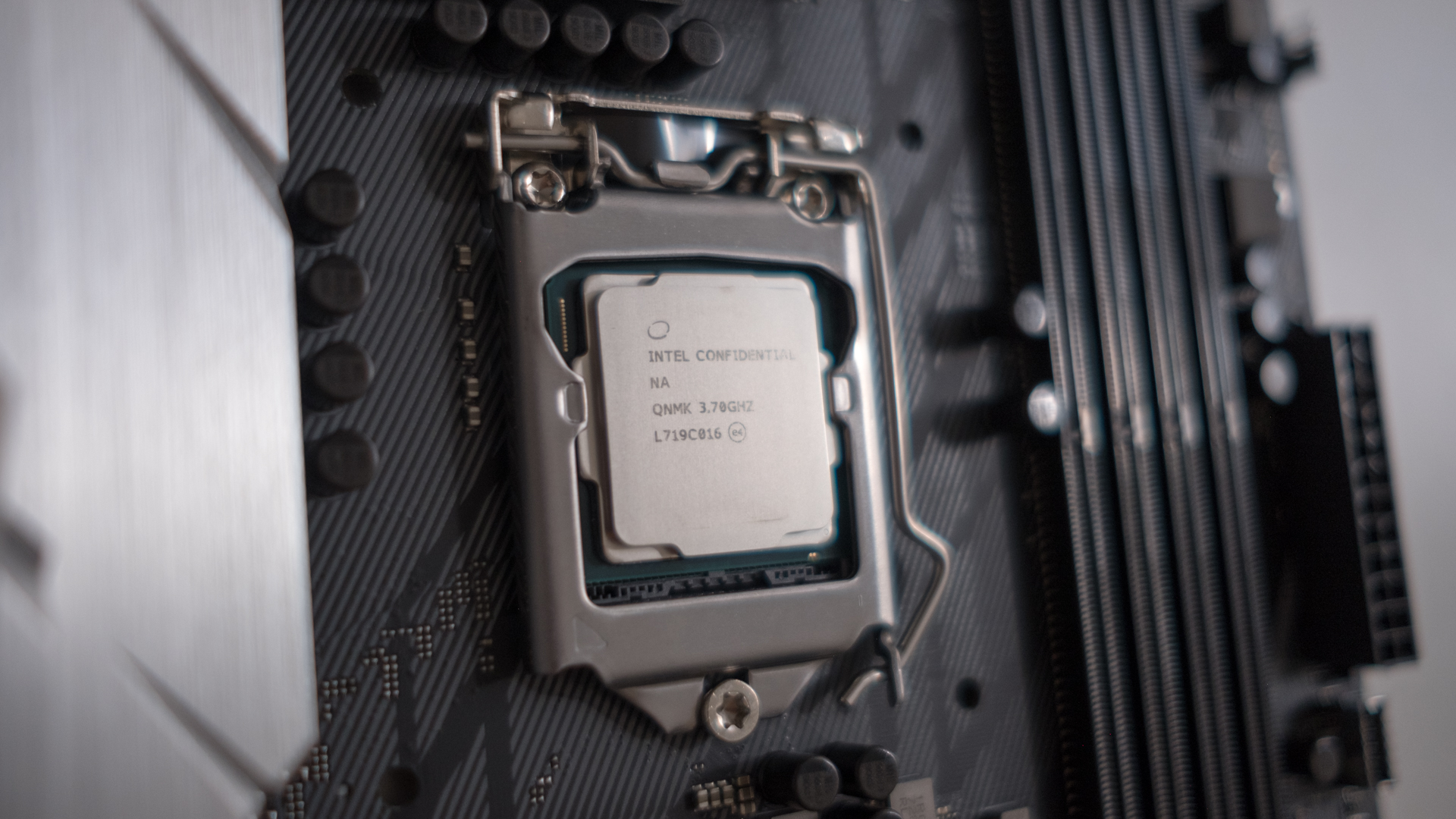

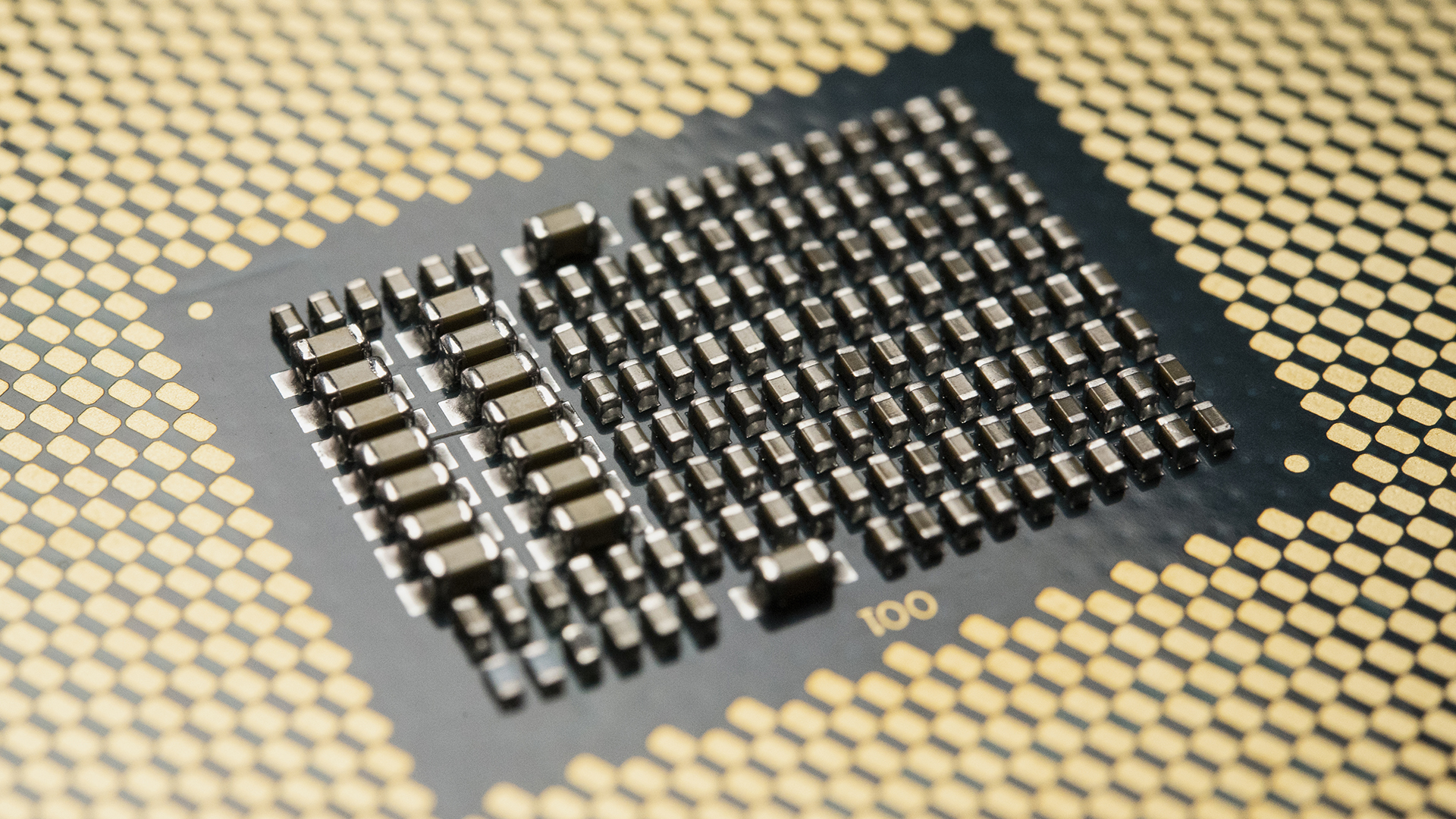

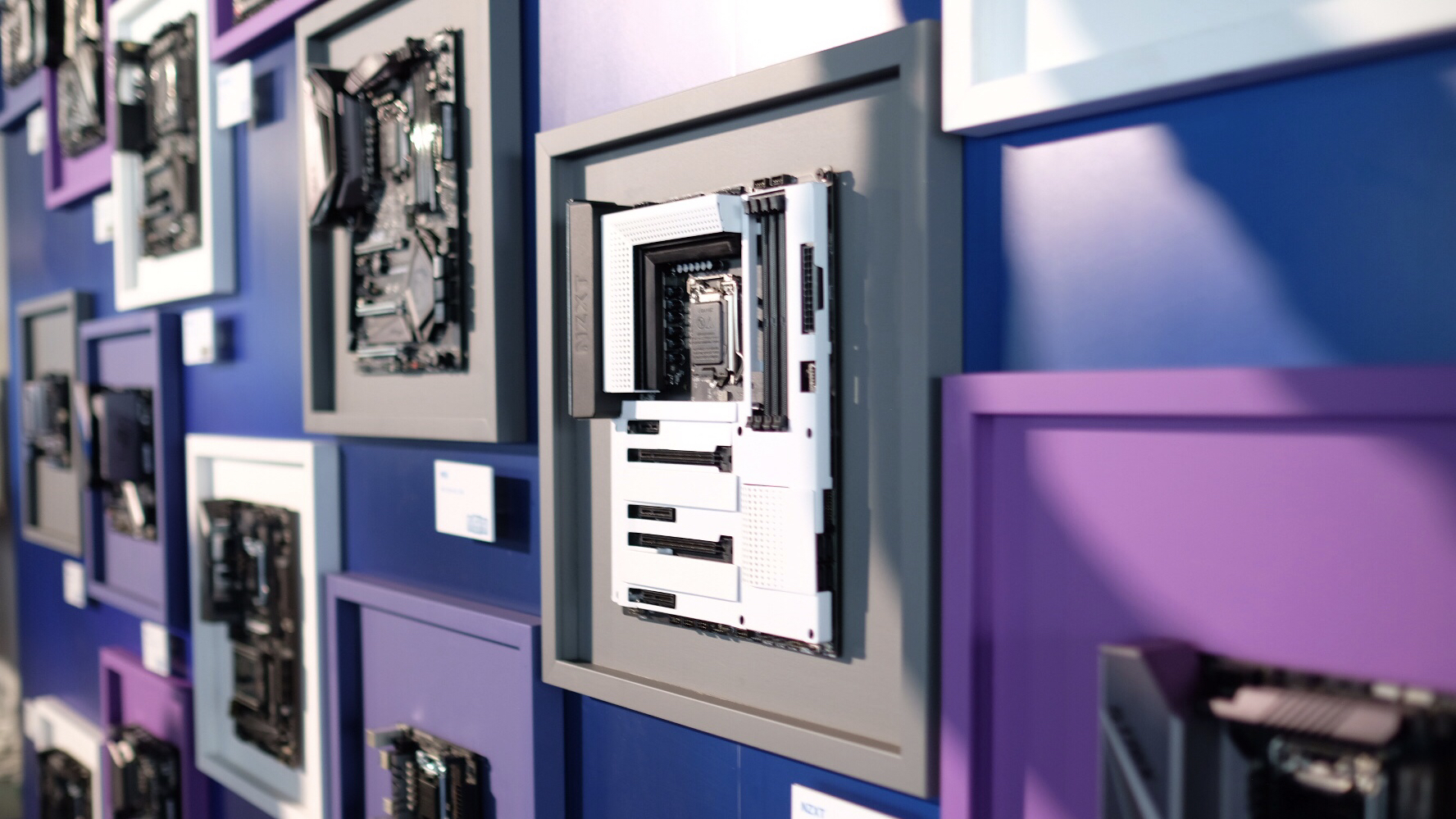

No comments:
Post a Comment